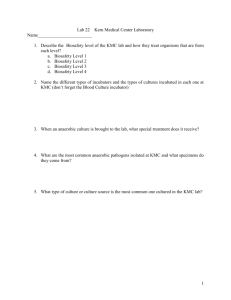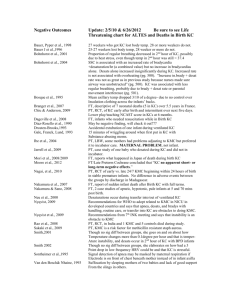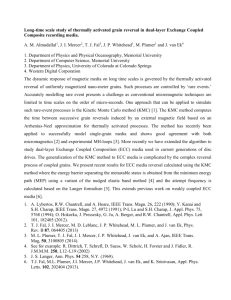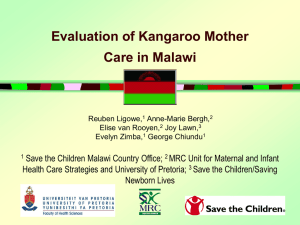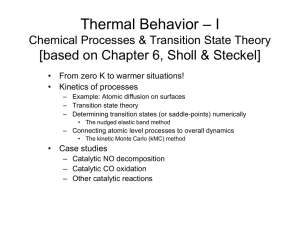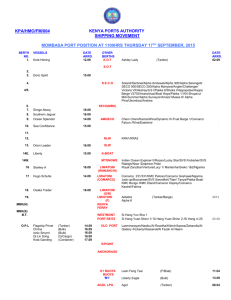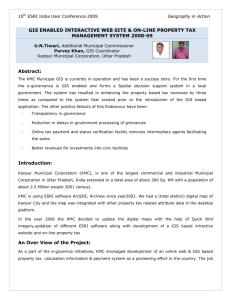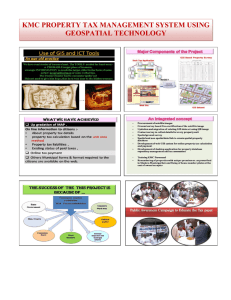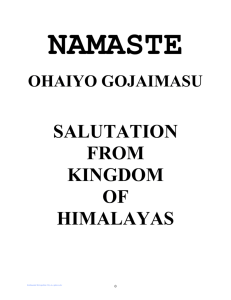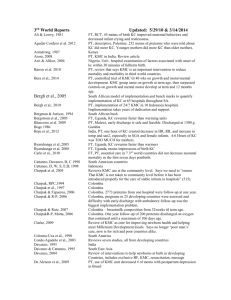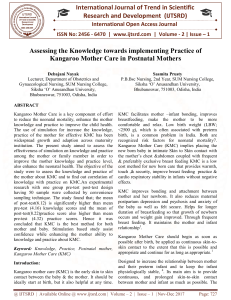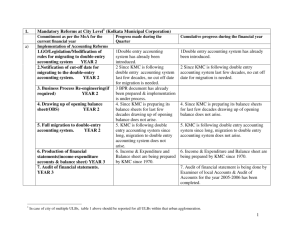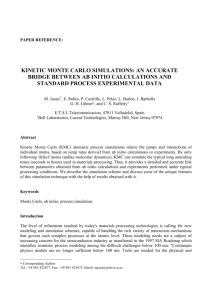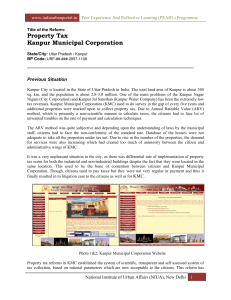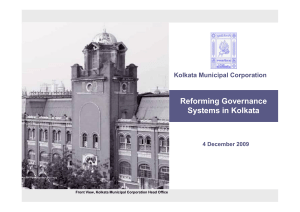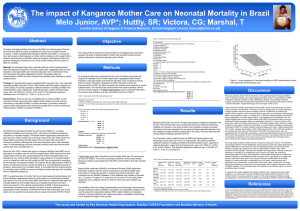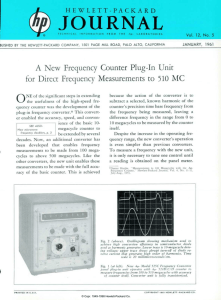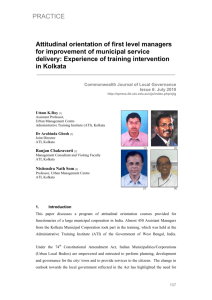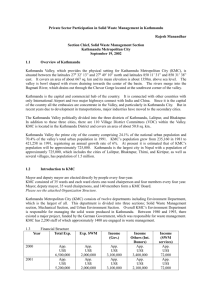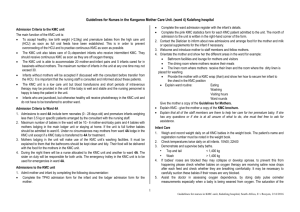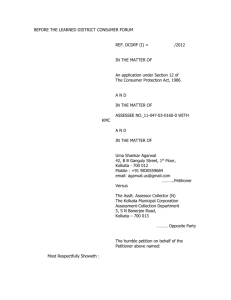Kathmandu Municipal Corporation, KMC (Nepal)
advertisement
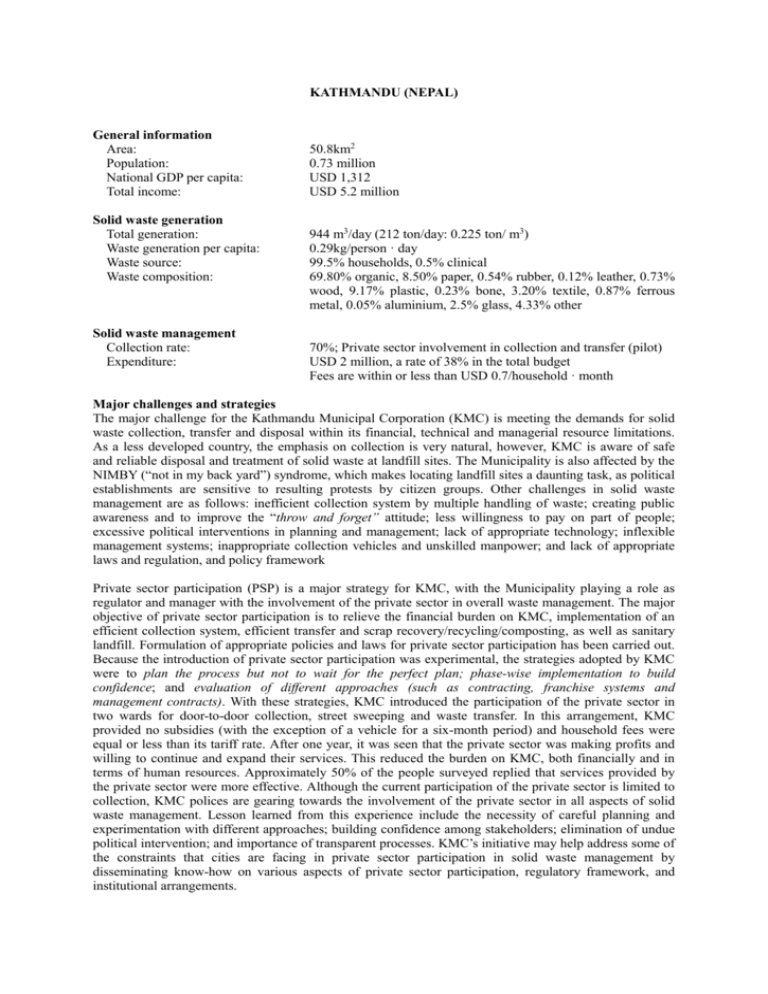
KATHMANDU (NEPAL) General information Area: Population: National GDP per capita: Total income: Solid waste generation Total generation: Waste generation per capita: Waste source: Waste composition: Solid waste management Collection rate: Expenditure: 50.8km2 0.73 million USD 1,312 USD 5.2 million 944 m3/day (212 ton/day: 0.225 ton/ m3) 0.29kg/person · day 99.5% households, 0.5% clinical 69.80% organic, 8.50% paper, 0.54% rubber, 0.12% leather, 0.73% wood, 9.17% plastic, 0.23% bone, 3.20% textile, 0.87% ferrous metal, 0.05% aluminium, 2.5% glass, 4.33% other 70%; Private sector involvement in collection and transfer (pilot) USD 2 million, a rate of 38% in the total budget Fees are within or less than USD 0.7/household · month Major challenges and strategies The major challenge for the Kathmandu Municipal Corporation (KMC) is meeting the demands for solid waste collection, transfer and disposal within its financial, technical and managerial resource limitations. As a less developed country, the emphasis on collection is very natural, however, KMC is aware of safe and reliable disposal and treatment of solid waste at landfill sites. The Municipality is also affected by the NIMBY (“not in my back yard”) syndrome, which makes locating landfill sites a daunting task, as political establishments are sensitive to resulting protests by citizen groups. Other challenges in solid waste management are as follows: inefficient collection system by multiple handling of waste; creating public awareness and to improve the “throw and forget” attitude; less willingness to pay on part of people; excessive political interventions in planning and management; lack of appropriate technology; inflexible management systems; inappropriate collection vehicles and unskilled manpower; and lack of appropriate laws and regulation, and policy framework Private sector participation (PSP) is a major strategy for KMC, with the Municipality playing a role as regulator and manager with the involvement of the private sector in overall waste management. The major objective of private sector participation is to relieve the financial burden on KMC, implementation of an efficient collection system, efficient transfer and scrap recovery/recycling/composting, as well as sanitary landfill. Formulation of appropriate policies and laws for private sector participation has been carried out. Because the introduction of private sector participation was experimental, the strategies adopted by KMC were to plan the process but not to wait for the perfect plan; phase-wise implementation to build confidence; and evaluation of different approaches (such as contracting, franchise systems and management contracts). With these strategies, KMC introduced the participation of the private sector in two wards for door-to-door collection, street sweeping and waste transfer. In this arrangement, KMC provided no subsidies (with the exception of a vehicle for a six-month period) and household fees were equal or less than its tariff rate. After one year, it was seen that the private sector was making profits and willing to continue and expand their services. This reduced the burden on KMC, both financially and in terms of human resources. Approximately 50% of the people surveyed replied that services provided by the private sector were more effective. Although the current participation of the private sector is limited to collection, KMC polices are gearing towards the involvement of the private sector in all aspects of solid waste management. Lesson learned from this experience include the necessity of careful planning and experimentation with different approaches; building confidence among stakeholders; elimination of undue political intervention; and importance of transparent processes. KMC’s initiative may help address some of the constraints that cities are facing in private sector participation in solid waste management by disseminating know-how on various aspects of private sector participation, regulatory framework, and institutional arrangements.
